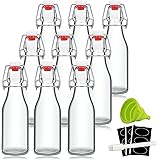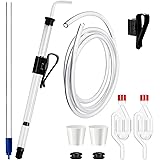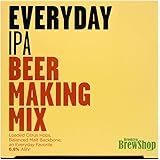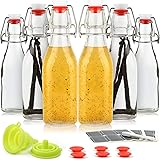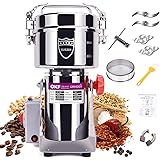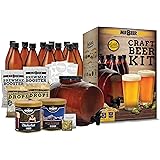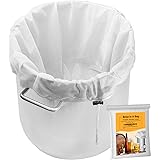Navigating the vast world of coffee can sometimes feel overwhelming, especially when trying to achieve that perfect cup at home. Many coffee enthusiasts struggle with inconsistent flavor or simply don’t know where to start when exploring different brewing techniques. Fortunately, understanding various coffee brewing methods is the first step toward unlocking a richer, more satisfying coffee experience, transforming your daily ritual into something truly special.
As Daizha highlighted in the video above, your choice of brewing method profoundly impacts the final taste profile of your coffee. Each technique excels at extracting particular characteristics from the coffee beans, leading to distinct aroma, body, and flavor nuances. Exploring these differences allows you to tailor your brew precisely to your preferences and even to the specific roast you are using.
Exploring Popular Coffee Brewing Methods for Optimal Flavor
The journey to excellent coffee brewing begins with selecting the right equipment and understanding its unique capabilities. Different machines and manual techniques interact uniquely with coffee grounds and water, dictating the extraction process. Understanding these variations is essential for consistently brewing delicious coffee.
Moreover, factors such as water temperature, grind size, and contact time play critical roles in defining the final outcome. Optimizing these elements for each method can dramatically enhance the inherent qualities of your coffee beans. Let’s delve deeper into some of the most popular coffee brewing methods introduced in the video.
The Classic Coffee Press: Richness and Body
A French press, or coffee press, is renowned for its ability to produce a remarkably full-bodied and robust cup of coffee. This immersive brewing method allows coffee grounds to steep completely in hot water before being separated by a plunger. This prolonged contact ensures a high degree of extraction, drawing out much of the coffee’s soluble compounds.
Furthermore, because the French press uses a coarse mesh filter rather than paper, it allows the natural oils present in the coffee beans to pass into your cup. These oils contribute significantly to the coffee’s distinctive texture and mouthfeel, resulting in that bold, rich flavor profile. This method is particularly well-suited for darker roasts that benefit from a slower, more complete extraction.
Pour Over Coffee: Brightness and Clarity
For those who appreciate clarity and nuance in their coffee, the pour over method offers an unparalleled experience. This technique involves slowly pouring hot water over coffee grounds nestled in a cone-shaped filter, allowing gravity to draw the brewed coffee into a carafe below. The controlled flow rate and precise water application facilitate an even extraction.
In addition, paper filters, commonly used in pour over brewing, effectively trap many of the fine coffee particles and oils that contribute to a heavy body. This filtration results in a cleaner, brighter cup that highlights the more delicate, aromatic notes of the coffee. Lighter roasts, often boasting complex floral or citrusy flavors, truly shine when prepared using a pour over.
Espresso: Intense Concentration and Sweetness
Espresso represents the pinnacle of concentrated coffee brewing, created by forcing hot, pressurized water through finely ground coffee. This rapid, high-pressure extraction process yields a small, potent shot with an incredibly intense flavor and a distinctive crema layer on top. The high pressure extracts a unique combination of dissolved solids and emulsified oils.
Moreover, the inherent sweetness in a well-pulled espresso is a testament to precise technique and quality beans. This method is not only enjoyed on its own but also serves as the fundamental base for a wide array of popular coffee beverages, including lattes and cappuccinos. Achieving a perfect espresso shot requires a specific grind size, consistent tamping, and careful attention to brewing parameters.
The Electric Coffee Maker: Convenience and Consistency
The ubiquitous electric coffee maker remains a household staple for its unparalleled convenience and ease of use. This popular drip brewing system automatically heats water and showers it over a bed of ground coffee, letting gravity do the work. It provides a reliable and hands-off approach to brewing larger quantities of coffee, perfect for busy mornings.
Additionally, modern electric coffee makers have evolved significantly, now featuring advanced showerhead designs and precise temperature controls for better extraction. While often considered basic, a good electric coffee maker can effectively extract a wide range of subtle flavors from medium to dark roasts. It consistently produces a balanced cup, making it a dependable choice for daily coffee consumption.
Factors Influencing Your Coffee Brewing Experience
Beyond the primary brewing method, several other critical elements contribute significantly to the final quality of your coffee. Understanding these factors allows for a more personalized and perfected coffee brewing experience. Even minor adjustments can lead to noticeable improvements in flavor and aroma.
Furthermore, experimenting with these variables is part of the joy of home coffee brewing, enabling you to fine-tune your technique over time. Each aspect interacts with the chosen brewing method, creating a complex interplay that defines your coffee’s character. Let’s explore some key considerations for achieving exceptional coffee.
Grind Size and Roast Level Synergy
The grind size of your coffee beans is arguably one of the most crucial factors in effective coffee brewing. It directly influences the surface area available for water extraction and, consequently, the contact time required. A proper grind ensures optimal flavor extraction, preventing either bitterness or a weak, watery taste.
Specifically, a coarser grind is ideal for longer immersion methods like the French press, where grounds steep for several minutes. Conversely, a very fine grind is essential for espresso machines, allowing for rapid extraction under high pressure. Moreover, matching the grind size to your coffee’s roast level can further enhance its intrinsic qualities, as lighter roasts often benefit from slightly finer grinds to release their complex acidity.
Water Quality and Temperature Precision
The quality of your water plays an often-underestimated role in coffee brewing. Water makes up over 98% of your coffee, so its taste and mineral content directly impact the final flavor. Filtered water, free from chlorine and excessive minerals, is generally recommended to allow the true coffee flavors to shine through without interference.
Additionally, consistent water temperature is vital for effective extraction. The ideal brewing temperature typically ranges between 195°F and 205°F (90°C to 96°C). Water that is too hot can over-extract the coffee, leading to a bitter taste, while water that is too cool results in under-extraction, producing a sour or weak cup. Precise temperature control significantly improves the outcome of your coffee brewing.


